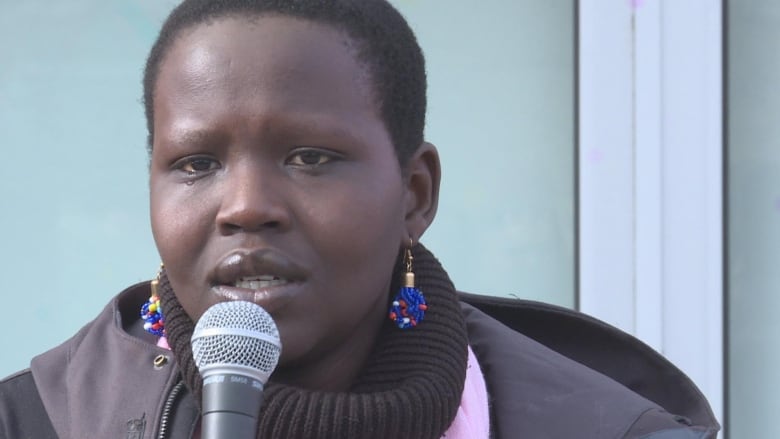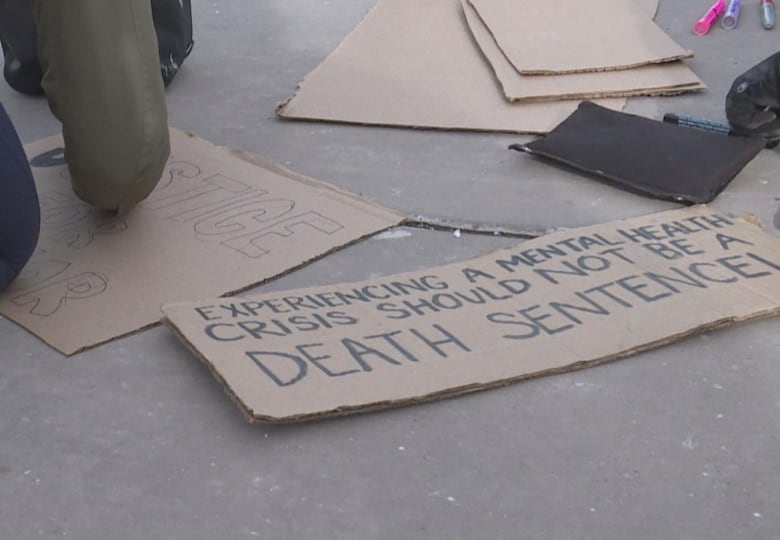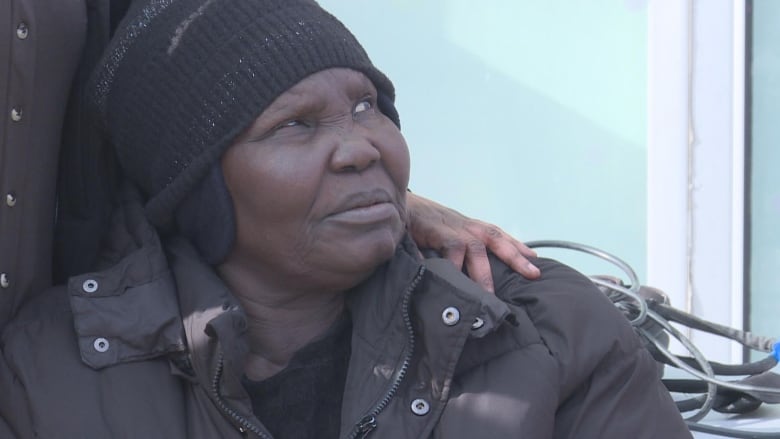Calgarians gathered Sunday to mark one year since the death of Latjor Tuel, who was shot and killed by police.
Gathering at the site where he died, Tuel’s family is still looking for answers.
Tuel was a former child soldier who immigrated to Calgary from South Sudan, and was said to have been struggling from mental health issues including PTSD at the time of his death.
In 2022 he was shot and killed by police. Police have said Tuel allegedly assaulted someone with a stick and that he was carrying a knife.
A solemn group of about two dozen people gathered in southeast Calgary Sunday to remember Tuel.
His eldest daughter, Nyalinglat Latjor, said Sunday she remembers her father as a teacher who always wanted to make others laugh.

But she added that she’s spent most of the year angry, and the passing of one year has brought up a lot of emotion.
“He said Nyalinglat, you’re so small and when I was your age I never had what you got. I was carrying around a gun bigger than me,'” she said.
“I never really appreciated that moment until I lost him, I never really thought of the depth of what he said until I lost him … it breaks my heart that he was suffering.”
She said Tuel came to Canada 22 years ago seeking a better life.
Nyalinglat said she wants to know why Alberta Serious Incident Response Team (ASIRT) is taking so long to investigate the shooting and release its report.
ASIRT investigates incidents where police officers may have caused serious injury or death, and serious or sensitive allegations of police misconduct.

CBC has previously reported on ASIRT’s backlog of hundreds of open files. CBC has reached out to ASIRT for comment, which was not immediately available.
“There’s video, they have the bodycam footage, why is the bodycam footage not released? Why are they not saying anything to us?” she said.
Nyalinglat pointed to the Toronto Police Service, which released a report in June which found the city’s police use more force against Black people with little explanation.
Nyalinglat called on the Calgary Police Service to provide its own data.
“I’m gonna keep yelling until they care. ‘Cause my pain is not going anywhere, so I’m not going anywhere,” she said.

She also asked why police shootings are still happening in Alberta, and asked what police are doing to take steps to change that.
On Feb. 4, ASIRT was directed to investigate an RCMP Alberta shooting on Cold Lake First Nation that resulted in a fatality. On Feb. 8, ASIRT was directed to investigate a Calgary police officer-involved shooting that resulted in injury.
On Feb. 12, ASIRT was directed to investigate an RCMP Alberta officer-involved shooting resulting in injury in Wheatland County, and on Feb. 14, ASIRT has been directed to investigate an officer-involved shooting that a media release said caused injury, but a subsequent ASIRT tweet said the person had died.
Tuel’s mother Rebecca Aker Akol spoke through Nyalinglat’s translation Sunday. She said she travelled to Calgary from Sudan because she needed to know why her son died.
“I want to know if there were other things that could have been done so that my son could be alive today,” Akol said. “Where was the fault?”
In the weeks following Tuel’s shooting, Calgary police chief Mark Neufeld said the “dynamic” scene presented a situation to officers that was far from perfect.
“Front-line police officers get the cards they’re dealt, and sometimes their hand is less than ideal,” Neufeld told a police commission meeting held Feb. 23.
One member of the Calgary police commission asked the chief why a canine unit was used as a de-escalation tactic given its problematic historical use on non-white subjects.
Calgary police were not immediately available for comment Sunday.
Police have also previously acknowledged that Tuel’s death “represents a setback” to efforts to build trust between CPS and the Sudanese community.













Leave a comment